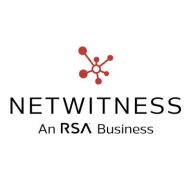

NetWitness NDR and Microsoft Defender XDR compete in network detection and response (NDR) and extended detection and response (XDR). Users generally find Microsoft Defender XDR superior due to its advanced integration capabilities and comprehensive threat detection.
Features: NetWitness NDR offers powerful packet capture and analytics, providing extensive visibility into network traffic. Its pricing structure and robust support also stand out. Microsoft Defender XDR excels in seamless integration within the Microsoft ecosystem, advanced AI threat detection, and a range of built-in security features.
Room for Improvement: NetWitness NDR could benefit from a more intuitive setup process, better documentation, and simplified initial configuration. Microsoft Defender XDR needs enhanced third-party integrations, faster incident response times, and broader capability ecosystem.
Ease of Deployment and Customer Service: NetWitness NDR users commend its responsive support but face challenges in deployment requiring manual intervention. Microsoft Defender XDR enjoys relatively straightforward deployment with automated setup wizards and consistent customer service satisfaction.
Pricing and ROI: NetWitness NDR is valued for its competitive pricing, offering good ROI with comprehensive features. Microsoft Defender XDR, though more expensive, justifies the cost with its extensive capabilities and efficient threat detection, resulting in favorable ROI for larger enterprises. Pricing makes NetWitness attractive for budget-conscious buyers.
Ever since we turned on the M5 feature set back in June, we have seen a reduced number of potentially malicious clicks and faster alerting when incidents occur.
It's critical to escalate SEV B issues immediately to a domestic engineer.
You get stuck in low-level support for way longer than you should, instead of them escalating the issue up the chain.
The customer service is good, and they supported us well.
Microsoft Defender XDR shows tremendous scalability, much more so than on-premises solutions.
It is suitable for enterprise-level deployment but has room for improvement.
The service has remained consistently online, with any issues isolated to specific components, suggesting a well-designed and modular architecture.
The services within our ecosystem have been reliable, meeting their SLAs.
The licensing process needs improvement and clarification.
Improvements are needed in automated response capabilities.
It would be better if much of that information were immediately visible, especially when looking at endpoints or users.
I would rate the pricing as eight out of ten, indicating it is a reasonable cost for the product.
Microsoft purposefully obfuscates this through marketing ploys to hide costs.
The pricing is a little high, however, it is on par with other competitive tools in the market.
This allows us to secure our systems in advance and proactively improve security, rather than waiting for incidents to occur.
With Microsoft threat intelligence information, it detects various types of threats, including insider attacks, malicious content, and data exfiltration.
Vulnerability assessment and just-in-time access are some valuable features of Defender for server plans.


Microsoft Defender XDR is a comprehensive security solution designed to protect against threats in the Microsoft 365 environment.
It offers robust security measures, comprehensive threat detection capabilities, and an efficient incident response system. With seamless integration with other Microsoft products and a user-friendly interface, it simplifies security management tasks.
Users have found it effective in detecting and preventing various types of attacks, such as phishing attempts, malware infections, and data breaches.
Watch the Microsoft demo video here: Microsoft Defender XDR demo video.
Using a centralized combination of network and endpoint analysis, behavioral analysis, data science techniques and threat intelligence, NetWitness NDR helps analysts detect and resolve known and unknown attacks while automating and orchestrating the incident response lifecycle. With these capabilities on one platform, security teams can collapse disparate tools and data into a powerful, blazingly fast user interface.
We monitor all Endpoint Detection and Response (EDR) reviews to prevent fraudulent reviews and keep review quality high. We do not post reviews by company employees or direct competitors. We validate each review for authenticity via cross-reference with LinkedIn, and personal follow-up with the reviewer when necessary.